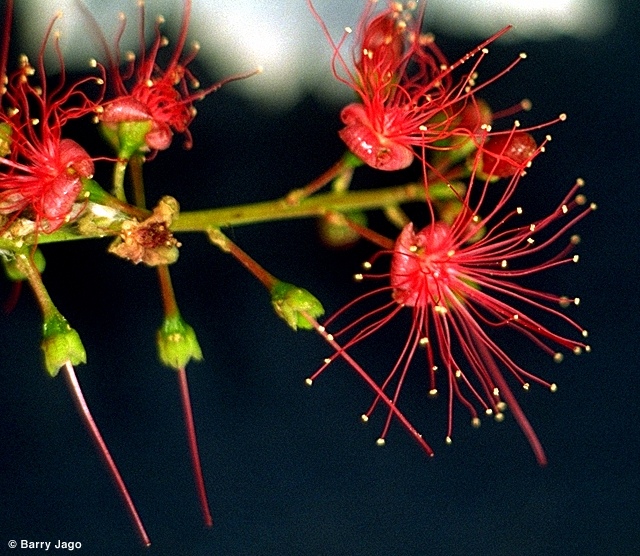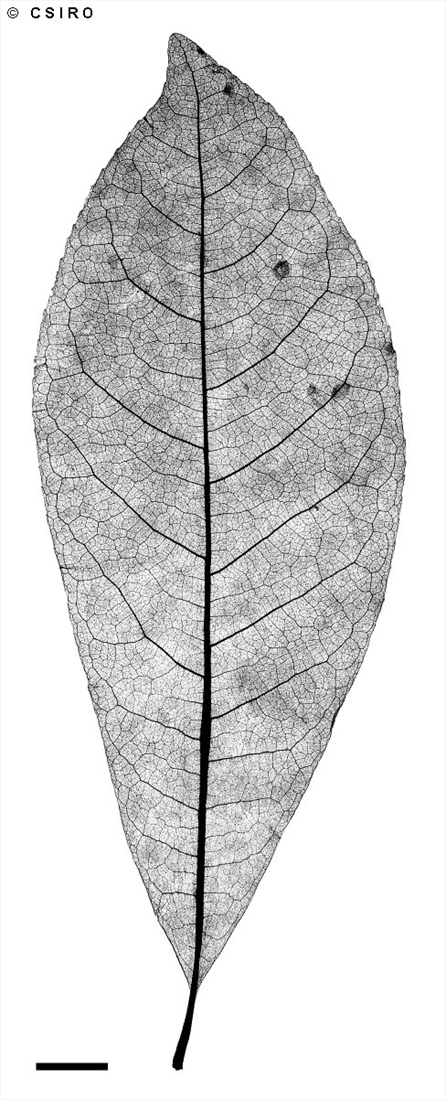Australian Tropical Rainforest Plants - Online edition
Barringtonia acutangula (L.) Gaertn. subsp. acutangula






Payens, J.P.D.W. (1968) Blumea 15: 228.
Barringtonia, Stream; Freshwater Mangrove; Indian Oak; Itchy Tree; Mango Bark; Mango Pine; Pine, Mango; Stream Barringtonia; Barringtonia
Blaze very fibrous. May be deciduous, leafless for a period around June.
Leaf blades about 7-19 x 2.5-7 cm, petioles about 0.8-1 cm long, margins winged. Marginal teeth small and numerous. Twigs rather pithy, bark strong and fibrous when stripped. Fine oak grain in the twigs.
Flowers pedicellate. Sepals free from one another even in the bud. Petals about 6-10 mm long. Anther filaments and styles red.
Fruits about 2-6 x 1-3 cm, 4-winged when young.
Roots grow from the opposite end of the seed to the leafy shoot. Cataphylls gradually increasing in size up the stem grading into leaves and sometimes produced among the true leaves. At the tenth leaf stage: leaves elliptic or narrowly elliptic; lateral veins forming loops inside the blade margin; teeth more pronounced in upper half of leaf blade. Seed germination time 25 to 84 days.
The roots and other parts of this species can be used as fish poison and this has been well documented. (Carr 1947).
This is rather remarkable as this species grows as a rheophyte or freshwater mangrove along many of the creeks and rivers in Northern Australia and one would assume that most of the compounds produced by this tree would already be found in the water.
A shrub to small tree that will grow well beside creeks or dams. Red flowers are produced in long racemes.





